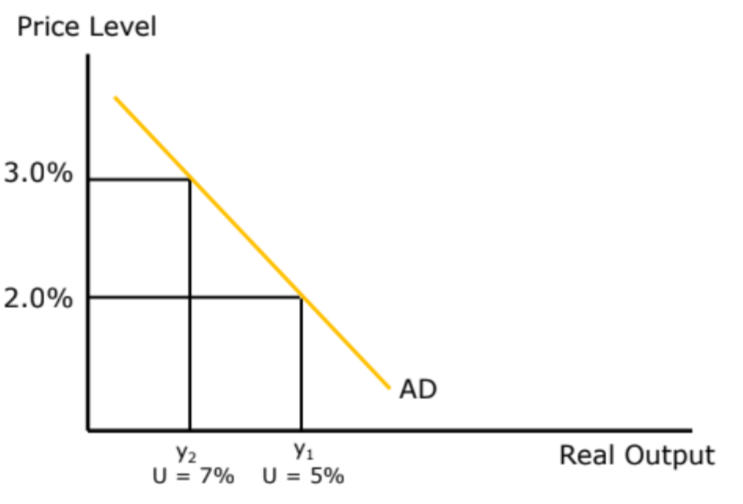2e. The AD curve
Downward sloping AD
If inflation is high then
Consumption will fall as the purchasing power of household’s money will not go as far with higher prices
Exports will fall (as UK goods are expensive relative to other countries) + Imports will rise (as UK consumers look for cheaper options abroad)
A change in the price level results in a movement along the AD curve
A change in one of the components of AD will cause a shift in the aggregate demand curve
I.e. an increase in C, I, G, X and a decrease in M will shift AD curve outwards
Aggregate Demand
AD is calculated using:
C + I + G + ( X - M )
C is the most important component and represents between 60% to 65% of the overall calculation
At an inflation level of 2%, the AD curve gives a level of output of Y1 This level of output will be associated with a particular level of unemployment which we will call U = 5%
At a higher rate of inflation (3.0%) C, I and (X-M) all have negative effects on AD – R.O falls to Y2 The lower level of National Income requires fewer units of labour – unemployment rises to 7% shown by U = 7%
